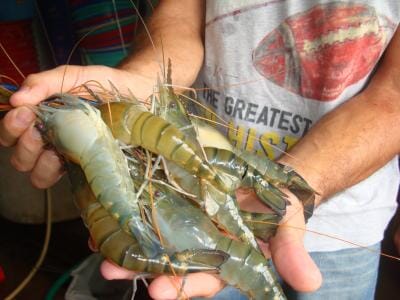Male sexual differentiation in crustaceans is regulated by the androgenic gland. It is thought that this overrides a default programme of female differentiation, allowing male features to develop.
This comes from the observation that removing the androgenic gland in juvenile males causes them to become "feminised" and capable of producing eggs. Curiously, when these "neo-females" are mated with normal males, the entire offspring is male.

Credit: Professor Amir Sagi
Click to enlarge
For commercial prawn farms, all-male populations are highly desirable as males are considerably larger than females. Furthermore, an absence of females prevents energy from being used in reproductive efforts, causing the males to grow faster and reach a greater overall size. However, surgically removing the androgenic gland is not a feasible option for large farms.
Professor Amir Sagi (Ben Gurion University of the Negev) and his colleagues recently found that prawn androgenic glands produce specific molecules known as insulin-like androgenic peptides (IAGs). Professor Sagi believes that these activate "a cascade of genes regulating masculine differentiation".
Working on giant freshwater prawns (Macrobrachium rosenbergii), they used a technique known as RNA interference (RNAi) to generate populations of neo-females.
This method uses genetic molecules, similar to naturally occurring ones, which temporarily bind to the target sequence, causing it to be recognised by enzymes which suppress the gene's function. The prawns were injected with a sequence designed to silence an IAG-encoding gene. This caused the males to undergo complete sexual reversal until they were indistinguishable from normal females. The key difference, however, is that these neo-females only produced male offspring.
"This is the first RNAi based biotechnology ever to be applied in aquaculture and indicates future opportunities" Professor Sagi said.
Besides boosting yields in commercial farms, this technology could also be used to control invasive crustaceans by altering population ratios. Professor Sagi also adds that non-reproducing prawns could be used "as sustainable bio-control agents" against freshwater snails that carry diseases (including shistosomiasis) or damage rice paddy fields.
As these prawns cannot form reproductive populations, there would be no risk of them becoming invasive species themselves.


